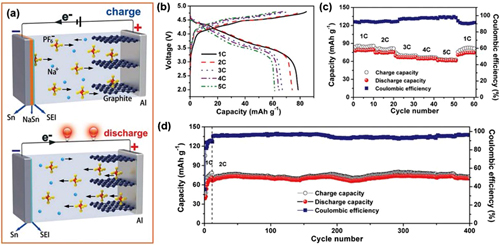报告题目(1):TEXTILE-ENABLED WEARABLE ELECTROCHEMICAL STORAGE DEVICES
报告人:Prof. Zijian Zheng (The Hong Kong Polytechnic University)
报告题目(2):新型双离子电池及其关键材料
报告人:唐永炳 研究员 (中国科学院深圳先进技术研究院)
报告时间:3月8日(周四)9:00-11:30
报告地点:李薰楼468会议室
(1) TEXTILE-ENABLED WEARABLE ELECTROCHEMICAL STORAGE DEVICES
Zijian Zheng
Institute of Textiles and Clothing,
Faculty of Applied Science and Textiles
The Hong Kong Polytechnic University
E-mail: tczzheng@polyu.edu.hk
PROFILE
Prof. Zijian Zheng is currently Full Professor at the Institute of Textile and Clothing (ITC) at The Hong Kong Polytechnic University. His research interests are surface science, self-assembly, nanolithography, polymer science, and bendable/stretchable/wearable/graphene materials and electronic devices. He received his B. Eng. in Chemical Engineering at Tsinghua University in 2003, and PhD in Chemistry at University of Cambridge in 2007. In 2008, he worked as postdoctoral researcher with Prof. Chad A. Mirkin at Northwestern University. He joined ITC as Assistant Professor in 2009, and was promoted to tenured Associate Professor in 2013 and Professor in 2017. He has published ~80 papers in high-impact international scientific journals including Science, Nature Comm., Advanced Materials, Journal of the America Chemical Society, Angewandte Chemie. He also files 16 international and China patents. He serves as Guest Editor for Advanced Materials and Small. He is recipient of more than 10 academic awards such as GENEVA Innovation Award, Future Leaders Programs and Early Career Awards. He is elected as Founding Member of The Young Academy of Sciences of Hong Kong.
ABSTRACT
Wearable electronics is foreseen to be the next major technology after smart phone in the near future. However, most conventional electronic devices are rigid, bulky, and heavy, making them difficult to wear. On the other hand, textiles are materials that have been worn by human beings for more than a thousand years. Textiles are flexible, lightweight, conformal, and highly manufacture-able. This talk will introduce how our research group makes use of fibre and textile for wearable electronics. These fibre-based electronic devices can function as high-performance electronics while maintaining the flexibility, lightweight, permeability, processibility, and even washing ability like textiles. In addition, we also show that fibre-based device can significant improve the electrochemical properties of the devices.
(2) 新型双离子电池及其关键材料
唐永炳*
中国科学院深圳先进技术研究院,深圳,518055,
E-mail: tangyb@siat.ac.cn
锂离子电池已广泛应用于便携式电子设备、储能设备等领域。随着锂、钴的需求量逐年快速增长,而锂、钴的全球储量有十分有限,且分布不均,造成原材料价格上涨迅猛,严重制约了低成本、环保、易回收储能器件领域的快速发展。钠等碱金属元素由于具有和锂相似的物理化学性质,且其储量丰富,成本低廉,使得基于钠等碱金属离子的二次电池体系备受关注。此外,近年来,双离子电池由于其正负极都采用环保廉价的石墨等材料,成本低廉,工作电压高等优势同样受到广泛关注。
综合钠等廉价碱金属离子与双离子电池的综合优点,我们发展了一系列基于钠、钾、钙等廉价金属离子的新型高性能、低成本双离子电池技术。该电池直接采用铝、锡等廉价金属箔材同时作为电池负极和集流体,采用石墨类层状材料作为正极;电解液采用钠等碱金属盐溶于有机溶剂中。其反应机理为:充电时,电解液中的阳离子运动到铝、锡等廉价金属箔负极表面,形成合金,同时阴离子插层到石墨类正极层状材料中;放电时,负极上的合金阳离子,同时正极石墨类层状材料的阴离子脱嵌回到电解液中。初步研究表明,基于钠、钾等新型双离子电池具有较为优异的循环稳定性,能量密度可比乃至优于多数传统锂电,表现出良好的应用前景。

(a)为新型双离子电池的反应原理示意图,(b)为不同倍率下的充放电曲线,(c)为倍率性能曲线,(d)为2C倍率下的循环性能曲线。
[1] Zhang, X. L.; Tang, Y. B.;* F. Zhang, C.S. Lee. * Adv. Energy Mater. 2016, 6: 1502588.
[2] Tong, X. F.; Zhang, F.; Tang, Y.B.;* et al. Adv. Mater. 2016, 28: 9979.
[3] Ji, B.F.; Tang, Y.B.;* et al. Adv. Mater. 2016, 28:1604219.
[4] Sheng, M.H.; Tang, Y.B.;* et al., Adv. Energy Mater. 2017, 7: 1601963.
[5] Qin, P.P.; Wang, M.; Tang, Y.B.;* et al. Adv. Mater. 2017, 29 :1606805.
[6] Wang, M.; Zhang, F.; Tang, Y.B.;* et al. Adv. Energy Mater. 2017, 7: 1700536.
[7] Ji, B.F.; Zhang, F.; Tang, Y.B.;* et al. Adv. Mater. 2017, 7: 1700519.
[8] Jiang, C.L.; Fang, Y.; Tang, Y.B.;* et al. Adv. Energy Mater. 2017, 7: 1700913.
[9] Ji, B.F.; Zhang, F.; Tang, Y.B.;* et al. Adv. Energy Mater. 2017, 7: 1700920.
[10] Zhang, S.Q.; Wang, M.; Tang, Y.B.;* et al. Adv. Funct. Mater. 2017, 27: 1703035.
[11] Tong, X. F.; Zhang, F.; Tang, Y.B.;* et al. Adv. Energy Mater. 2017, 7: 1701967.
[12] Wang, M.; Tang, Y.B.* Adv. Energy Mater. 2018, 8: 1703320.
[13] Wang, M.; Jiang, C.L.; Tang, Y.B.;* Cheng, H.M.* et al. Nat. Chem. 2018, 17112486, accepted.